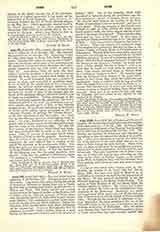

John VI, POPE (701-705), a Greek, the date of whose birth is unknown; d. January 11, 705. He ascended the papal throne October 30, 701. Some time during his reign there came to Rome from Sicily Theophylactus, “chamberlain, patricius, and exarch of Italy“. After the treatment which some of his predecessors in the exarchate had meted out to the popes, the Italian people suspected that his visit boded no good to John VI. Accordingly, from all parts the local militias hurriedly marched to Rome, and, encamping without the walls, made manifest their dislike of the exarch. To avoid bloodshed, John sent a number of priests to them, and succeeded in pacifying them, as far at least as the exarch himself was concerned. Before the militias would disband, however, they insisted that certain informers, whose denunciations had put the wealth of some of the citizens into the hands of the grasping officials, should be handed over to them for punishment. Taking advantage of this want of harmony between the exarch and the native Italians attached to the pope, the Lombards renewed their attacks on such parts of Italy as had hitherto resisted them. Several towns belonging to the Duchy of Rome were seized, Gisulf advanced as far as “Horrea” Puteoli—or perhaps the “fundus Horrea” at the fifth milestone on the Via Latina. As “there was no one who had power to resist him by force of arms”, the pope, distressed at the sufferings of the people, sent a number of priests furnished with money into the camp of the Lombard duke. Not only did they ransom all the captives whom Gisulf had taken, but they persuaded him to retire to his own territories. John VI was one of the popes before whom St. Wilfrid of York carried his appeals. Pointing out that the action of the Apostolic See was wont to be consistent, the saint adjured him to confirm in his behalf the decisions of his predecessors (704). This John did, and sent him back to England with letters for King Ethelred and others. It was not, however, till the following year that the papal mandates were obeyed. John sent the pallium to Brithwald, whom “he confirmed as Archbishop of Canterbury”. He was buried in St. Peter’s.
HORACE K. MANN

